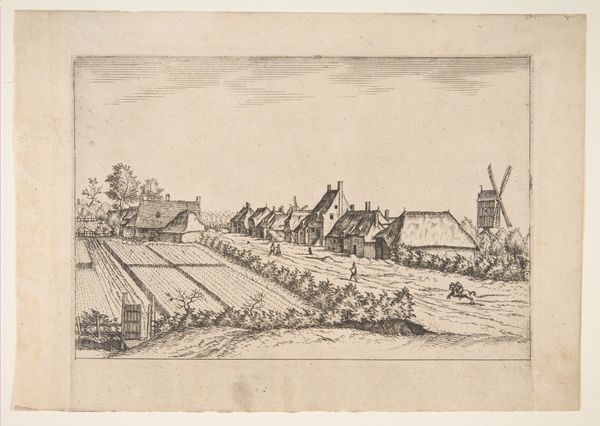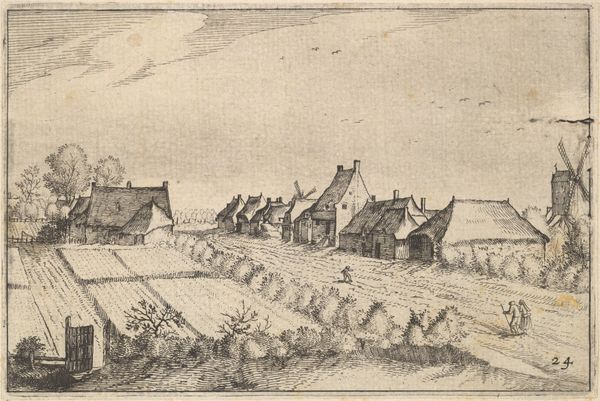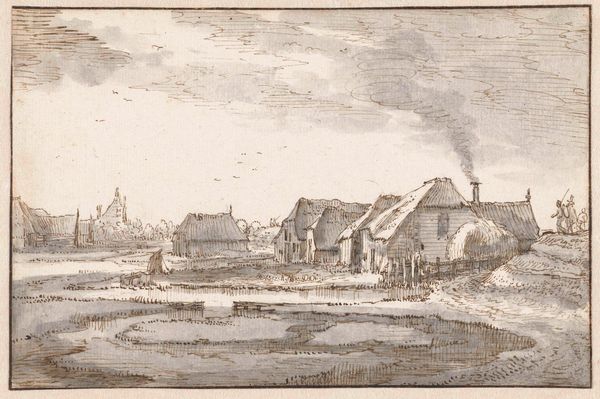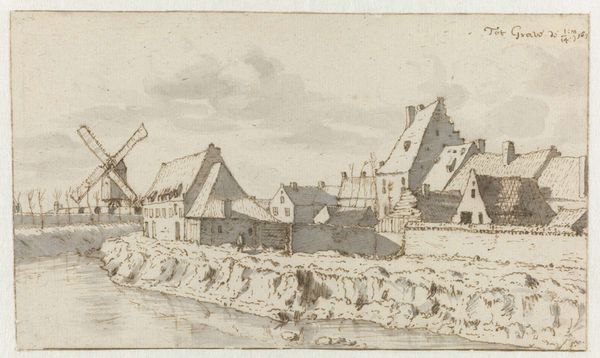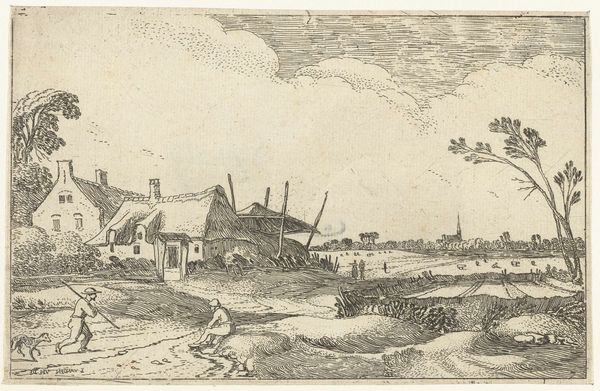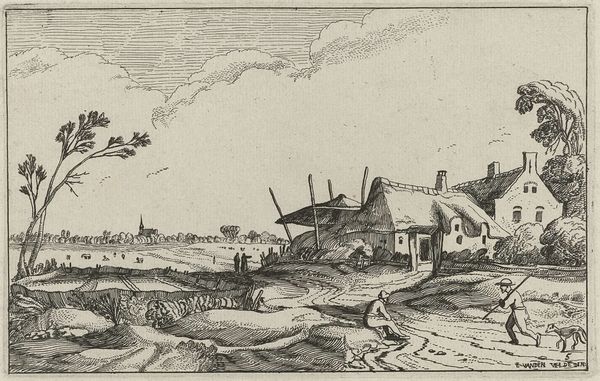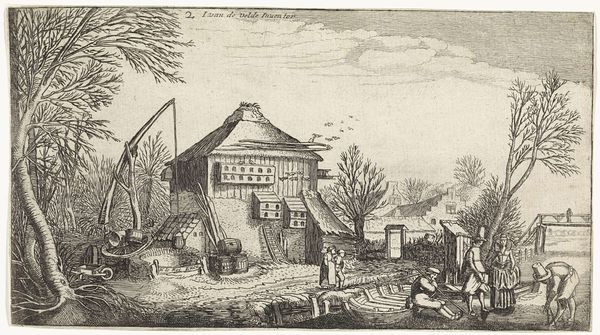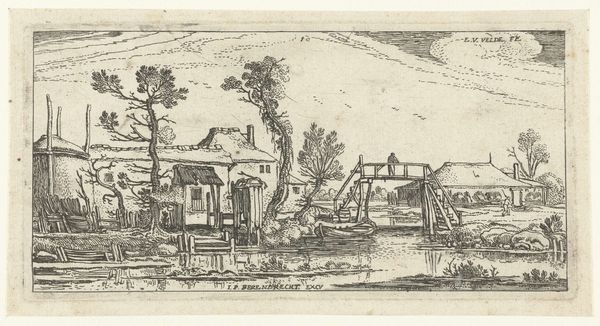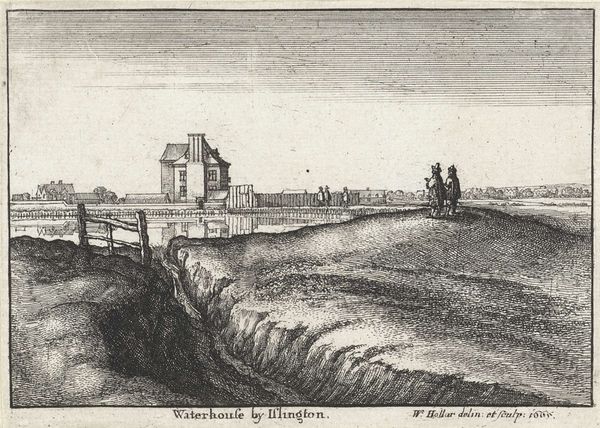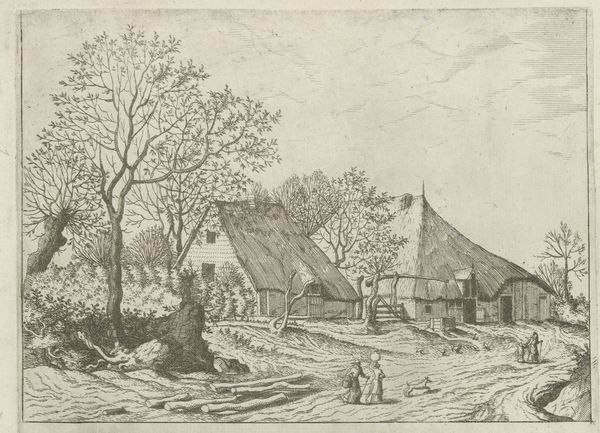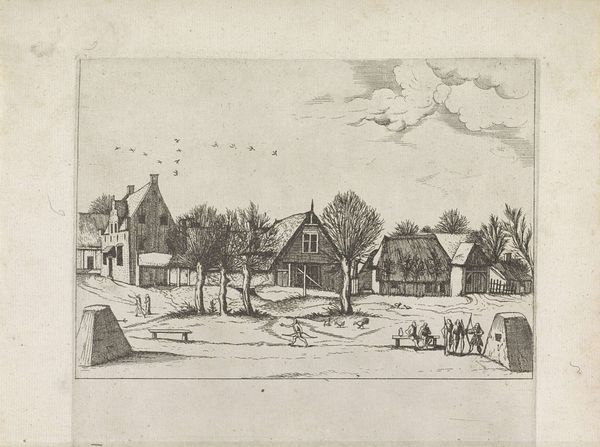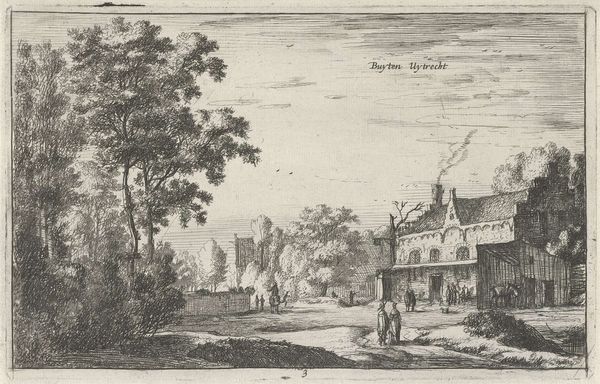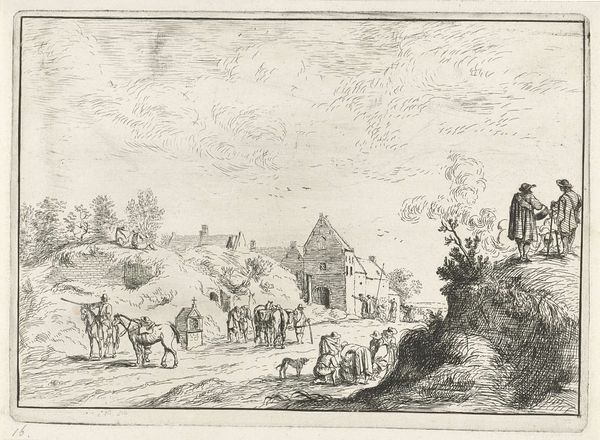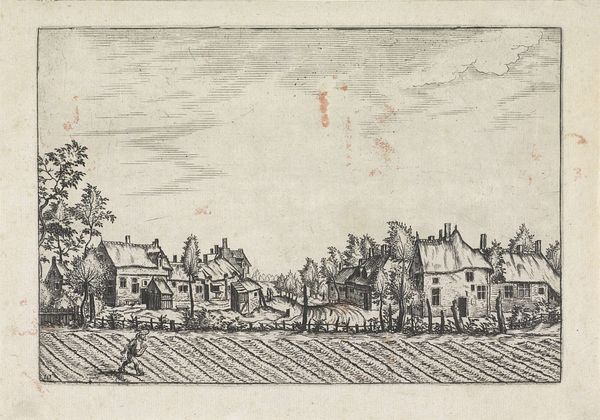
Fields and a Village Road, with a Post Mill c. 1559 - 1612
0:00
0:00
Dimensions: plate: 13.2 Ã 19.6 cm (5 3/16 Ã 7 11/16 in.) sheet: 18.1 Ã 29.1 cm (7 1/8 Ã 11 7/16 in.)
Copyright: CC0 1.0
Editor: This etching, "Fields and a Village Road, with a Post Mill" by Joannes van Doetecum, depicts a quaint, rural scene. I am struck by the presence of a windmill, which stands tall in the distance, overlooking the road. What symbols do you notice? Curator: The windmill signifies more than just agrarian life; it represents Dutch ingenuity and the harnessing of nature. Windmills, prevalent in the Netherlands, were vital for draining land and generating power. The journey from fields to the mill is a journey of transformation. Editor: Transformation? I see it more as a snapshot of daily life. Curator: It is that, yes. Consider, though, how images of windmills became symbolic of Dutch identity itself, a cultural shorthand for progress and resilience. What do these symbols mean to people today? Editor: I hadn't considered the long-term cultural impact. Thanks for making me think about the symbolism more deeply! Curator: It's a pleasure to reveal how these visual cues connect us to the past.
Comments
No comments
Be the first to comment and join the conversation on the ultimate creative platform.
